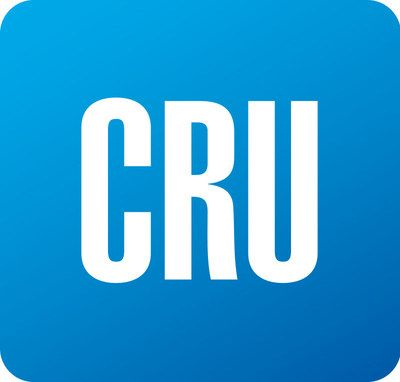International Steel Prices

CRU: U.S. Anticipates Wave of Imports in Tight Steel Market
Written by Estelle Tran
March 19, 2021
By CRU Prices Analyst Estelle Tran, from CRU’s Global Steel Trade Service
The strength and longevity of the current uptrend in steel prices has surprised many market participants, and mill maintenance outages are expected to keep lead times extended. The latest lead time survey on March 15-17 from Steel Market Update, which is part of CRU, pegged mill HR coil lead times at 8.8 weeks. Severe winter weather in mid-February created massive power outages and disrupted steel production in the Southern U.S. and Northern Mexico. With mills running behind schedule and controlling order entry, inventories continue to be at low levels.
Beginning late last year, buyers started to look offshore for steel to ensure they had enough supply to meet demand. Much of that steel is arriving now, but domestic prices have also risen to levels where imports are attractive from a pricing standpoint. On March 17, the CRU Midwest HR coil assessment reached $1,283 /s.ton, up $115 or 9% from $1,168 /s.ton on Feb. 17. Current offers for HR coil from South Korea, which is not subject to a 25% Section 232 tariff, for June-July arrival have been $1,010 /s.ton, on a loaded truck basis in Houston. Pricing from other origins subject to tariffs and duties in some cases, such as Turkey, have been quoted around $1,100 /s.ton on a DDP basis in Houston.
February import licenses for carbon and alloy flat products reached 750kt in February, which if all materialized, would be the highest level reached since January 2020, according to U.S. Department of Commerce data. Conversations with market contacts indicate this is the beginning of the trend, and imports will be elevated into Q3. Conversations for downstream products are taking place as far out as October, but with more hesitancy because of an expected price correction later this year.
For long products, buyers see that wire rod imports inclusive of tariffs are very close in price to domestic prices and continue to be booked in order to ensure supply. Domestic longs prices are expected to rise to follow scrap, which should increase the spread between domestic and import prices. Steel mills have raised rebar prices $30-40 /s.ton and wire rod prices $30-50 /s.ton in the last two weeks.
Brazilian Slabs Still Supported
Brazilian slab prices, though assessed down $10 /t m/m at $760 /t last week, have already bounced back up with support from high sheet prices in the U.S. New offers are in the $770-800 /t range on an FOB basis. There has been strong demand in North America, Turkey and domestically. In February, exports increased by 63% y/y, to 490kt, and 79% of the total volume was exported to the U.S. and 7% to Canada, according to IHS Markit.
Slab producers are negotiating for May shipments, indicating that lead times are relatively short. With prices so elevated, producers are focused on running full. CSP postponed its maintenance outage planned for April out to H2.
Outlook: Pricing Direction to Remain Supply Driven
SMU has shown that U.S. service center inventories on order—but not received—have represented more than 100% of inventories since November and reached a new high in February. While this illustrates the low inventories and long mill lead times domestically, it also points to the influx of imports on the way. The surge in imported supply as well as increased domestic production are setting the sheet market up for a significant pricing correction.
While the spike in steel prices has been mostly supply driven, some have been looking to the American Rescue Plan Act—the $1.9 trillion stimulus bill signed by President Biden last week—to bolster the economy. While this bill will support families, businesses hurt by the pandemic, schools and vaccine distribution, it is unlikely to significantly generate steel demand. It will help to make up for state and local government budget shortfalls to keep public employees working. Market participants instead remain hopeful that a multi-year infrastructure bill will support steel consumption, though that would not be a factor for this year.
In Brazil, steel prices are approaching the peak, capping the gains possible for raw materials. The gains in slab prices have been largely supply driven, and a rebalancing is imminent as supply catches up with demand. Iron ore prices have already started to fall, while scrap prices are at or near peak. When these prices both head down, slab prices are expected to follow.

Estelle Tran
Read more from Estelle TranLatest in International Steel Prices

Doubled S232 tariff holds US HR prices below EU
David Schollaert presents this week's analysis of hot-rolled coil prices, foreign vs. domestic.

Higher US CR prices inch closer to EU, Japanese tags
US cold-rolled (CR) coil prices continued to tick higher this week, while offshore markets were mixed.

Stacked S232 keeps US HR prices below EU
US hot-rolled coil prices crept up again this week but still trail imports from Europe.

Doubled S232 lifts EU, Japanese CR prices over US tags
US cold-rolled (CR) coil prices edged up again this week, and most offshore markets moved in the opposite direction. But the diverging price moves stateside vs. abroad did little to impact pricing trends. The bigger impact was from Section 232, which were doubled to 50% as of June 3. The higher tariffs have resulted in […]

CRU: Sheet demand remains weak, tariff changes again alter markets
Subdued demand has continued to weigh on steel sheet prices globally.
